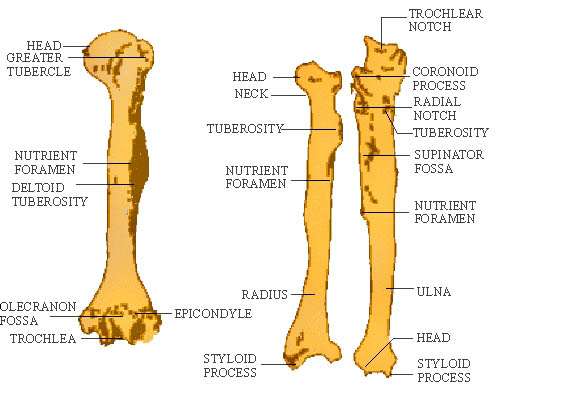|
(B) Arm or Forelimb Bones
 Click here to enlarge
Click here to enlarge
Figure 20.16 Humerus Figure
20.17 Radius-Ulna
of
a human of
a human
(a) Humerus (Figure 20.16). (1) This is
a long and strong bone of the upper arm which articulates with the
glenoid cavity of the pectoral girdle at the proximal end and with
the radius-ulna at the distal end. (2) The humerus consists
of a rounded head, neck, greater and lesser
tuberosities and inner tubercular sulcus at the upper end.
Various muscles are attached on the tuberosities and the sulcus.
(3) The shaft is long, with nutrient foramen, tuberosities
and a groove for the radial nerve. (4) The lower end consists
of the capitulum, which articulates with head of
radius, and the trochlea, which is pulley-shaped and
articulates with the trochlear notch of the ulna. (5) The
lower his end also shows a blunt medial epicondyle, lateral epicondyle,and
coronoid and radial fossae. Fracture of the shaft at the lower end
may damage radial and ulnar nerves.
|
